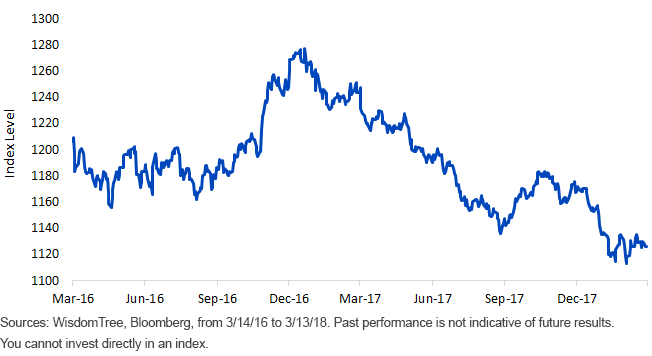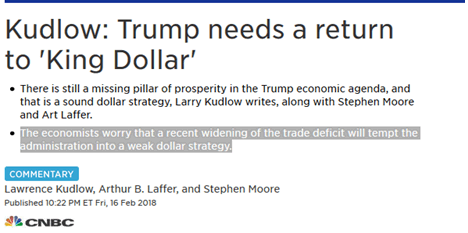
One of the most important macro stories of the last 15 months has been the dramatic decline in the U.S. dollar. This has helped spur international equity indexes that package foreign currency returns on top of the equity investments.
Bloomberg Dollar Spot Index

When looking at historical factors that drive currency movements, interest rate differentials are important, and the recent environment has been one in which the U.S. Federal Reserve (Fed) has been hiking interest rates, while the major developed market central banks in Europe and Japan have kept short-term rates in negative territory. This makes the collapse of the dollar all the more interesting and perhaps surprising.
The best explanation for what has been happening, in our view, is really politically motivated uncertainty around whether U.S. policy actions were going to favor a weaker dollar environment with reduced capital flows and investments into the U.S.
The changing of the guard in the White House, with the departure of Gary Cohn as Trump’s primary economic advisor and the insertion of Larry Kudlow, may be ushering in a very important strategic change in the currency markets and sentiment. In February, Kudlow and fellow authors Stephen Moore and Art Laffer authored the following story:

Some excerpts from Kudlow’s article:
The Trump Administration and the Republicans in Congress have passed one of the best pro-growth tax bills ever. The Tax Cuts and Jobs Act ranks in the all-time hall of fame of legislation, along with Ronald Reagan’s 1981 and 1986 Tax Acts and John F. Kennedy’s posthumous tax cuts of 1964. …
When this is combined with President Donald Trump’s deregulation agenda, we see no reason why the economy cannot grow for a sustained period at 3 to 4 percent growth—up from 1.6 percent in Obama’s last year. But there is still a missing pillar of prosperity in the Trump economic agenda, and that is a sound dollar strategy.
The dollar weakened in 2017 and we want it stabilized. …
… under Reagan the U.S. dollar increased by 67 percent in value on foreign exchange markets through 1985. The price of gold, interest rates, and inflation all fell as well from double-digit inflationary highs, while the American economy reignited and the stock market launched its 18 year bull market.
Or, go back further in time. In May of 1962, President Kennedy’s Revenue Act was passed and he reaffirmed that the U.S. dollar was as good as gold—thus launching the incredible boom called the ‘Go-Go Sixties’.1
















